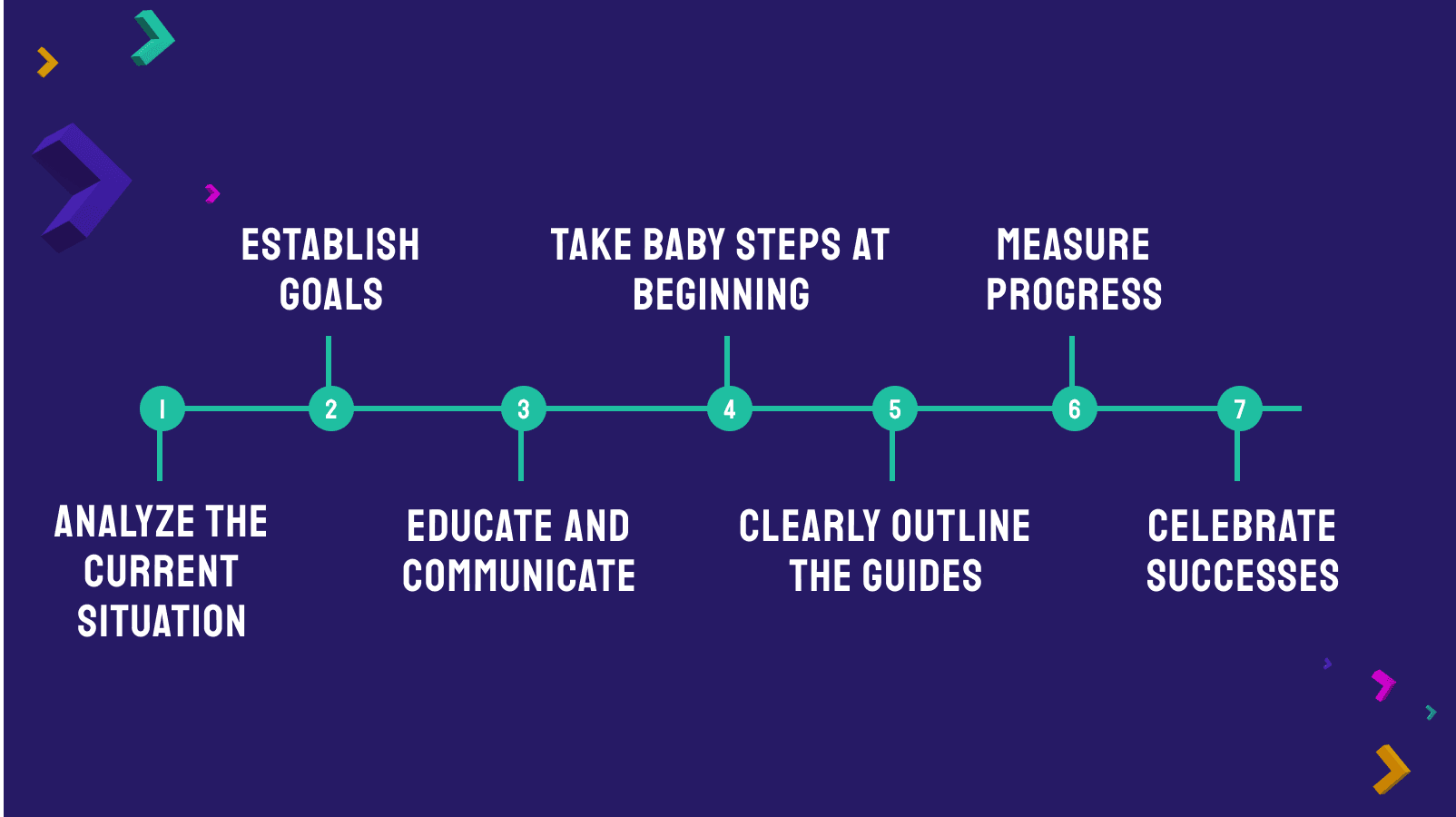
In the first part we provided an overview of self-management and its fundamental principles. In this article, we'll look at the practice and see how it can be used in real life.
When would be an appropriate time to think about implementing a self-management system?
When you lack experience with self-management, asking: "Is self-management the right approach for us now?" might be challenging, because taking risks is inherently hazardous. For that reason, you should never act without first doing a thorough evaluation. At the first stage of evaluation, you should follow a number of steps to ensure you are making an educated decision about whether this method is suitable for you.
Given this, let us picture a few situations in which it might be wise to start thinking about it:
— Our business is expanding at a rapid pace, and our traditional flat organizational structure appears inefficient.
The moment to start considering it is now. When a flat structure becomes inefficient, you have two options for expanding. Spend your money on management, both in terms of quantity and quality, or put it in the hands of the employees who will run your business and give them a chance to prove themselves by working independently for a while.
— We want to use modern approaches to work, and our employees share this vision of autonomy.
Great! Employees like that deserve respect. Your journey is halfway complete if this idea has developed naturally up to this point. Your team is on the same page; now it is your turn to promote open communication, consider team feedback, and define roles and responsibilities in relation to self-management.
— We are looking to adjust to the fact that most of our team works remotely from different places across the globe.
The absence of in-person meetings makes it more difficult to implement effective management in the traditional manager - employee relationship, which is especially problematic in a globally dispersed team that operates primarily remotely and has its own set of regulations. The idea of self-management, when presented with such a situation, can be quite helpful. In return for taking more ownership of their work, employees can reap many rewards by making adjustments to their work lives.
What is the best way to begin?
After all, what are the most important things to do first, and in what sequence should they be done? We have divided the whole pie into smaller pieces so that you can better understand the larger picture.

Analyze the current situation
To begin, you should examine the current state of your business and identify its strengths and shortcomings. That should give you a good idea of the big picture when it comes to whether or not you can move forward with such a solution.
Establish goals
Figure out the big picture, or what you want to achieve, and then go forward from there. With that, you can determine the little, manageable steps needed to reach the target.
Educate and communicate
It should come as no surprise that the foundation of success is education and communication. Having an honest conversation with your team about your objectives and plans will allow you to receive honest criticism as well as suggestions for how to improve.
Take baby steps at the beginning
Deep diving is not a smart move when you are just learning to swim. By taking baby steps, you will be able to assess your progress so far and plan for the future with more precision.
Clearly outline the guides
Make sure everyone is on the same page by establishing ground rules for the team. Make sure that self-management does not devolve into chaos.
Measure progress
Analyze the results of your work as you go along, just as you did with the course material at the start. The results of the analysis will show you how well your implementation worked and where you can make changes for the better.
Celebrate successes
You should rejoice in every victory. Do not be afraid to express your joy at success and hand out compliments.
How does it work in real world projects?
In practice, it's not all rainbows and unicorns. With this style of management, as with any other, there could be issues and difficulties in practical situations. Not to mention that not everyone thrives under this management style, and it is probable that some employees will be "screened out" as a result. Conversely, when you empower your employees to make decisions and take initiative, you open up more decision-making and strategic options for the company. In return, you will most likely see increased loyalty from your employees, which in turn lowers turnover and the cost of training new hires.
At the end of the day, it is more cost-effective to pay more experienced employees well, than to spend money on finding and training new ones.
We appreciate it if you have made it this far. Hopefully, you now have a better understanding of self-management after reading our more in-depth explanation. Feel free to contact us at any time with questions regarding this topic.
Author

Jan Řičica
Technical Analyst & WriterI manage end-to-end software analysis, from gathering client requirements to crafting clear and comprehensive technical documentation, ensuring every detail aligns with the project’s goals.
Related Articles
7 steps for efficient meetings
Endless sessions on nothing, where you don't even have to sit down anyway, are one of the flaws of the modern age.

Prokop Simek
#1 What is self-management and how does it work?
Self-management, also known as self-organization or self-governing, refers to a workplace where employees are empowered to oversee their schedules, tasks, and projects without the need for constant oversight. This approach has its advantages and disadvantages, which we will explore.

Jan Řičica